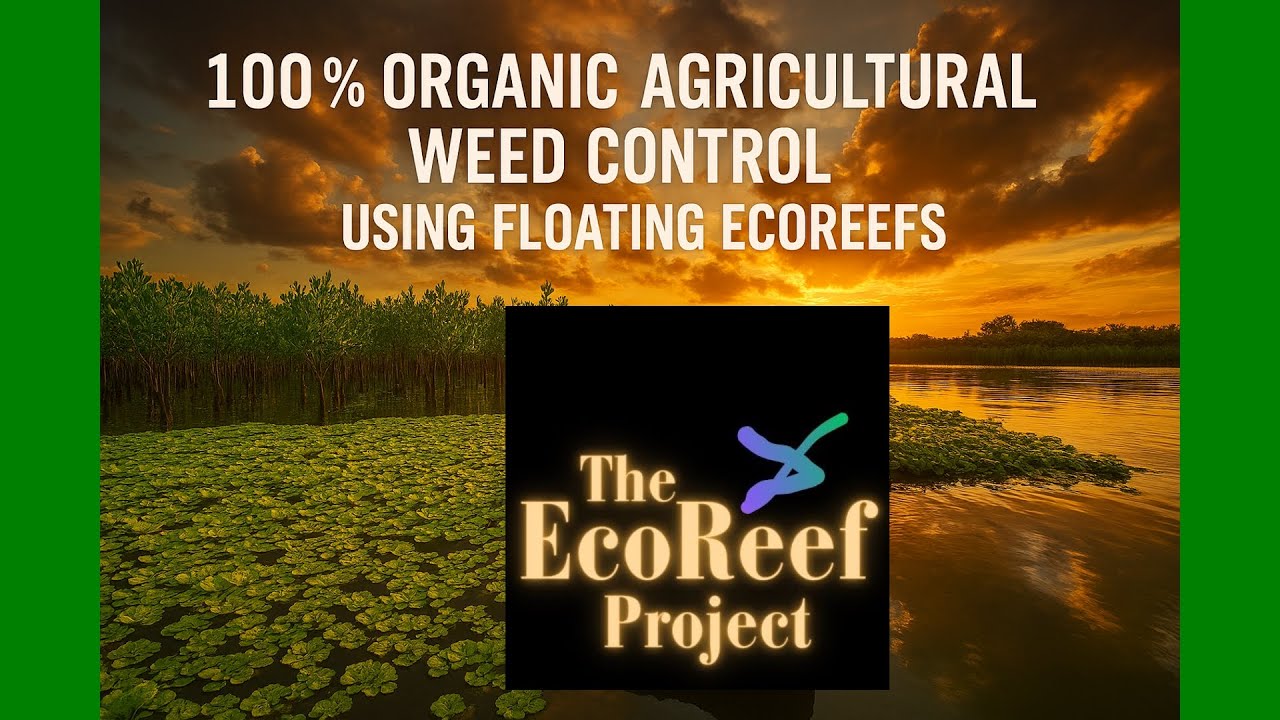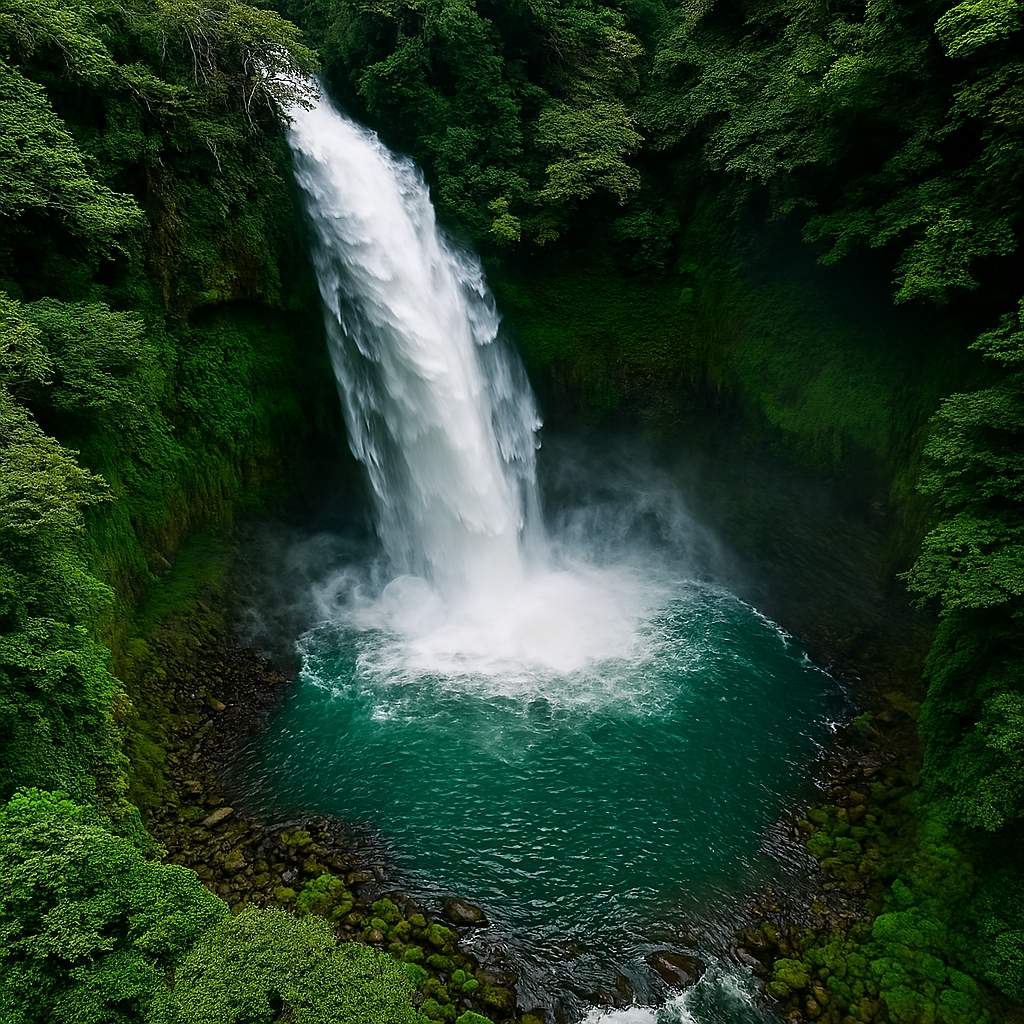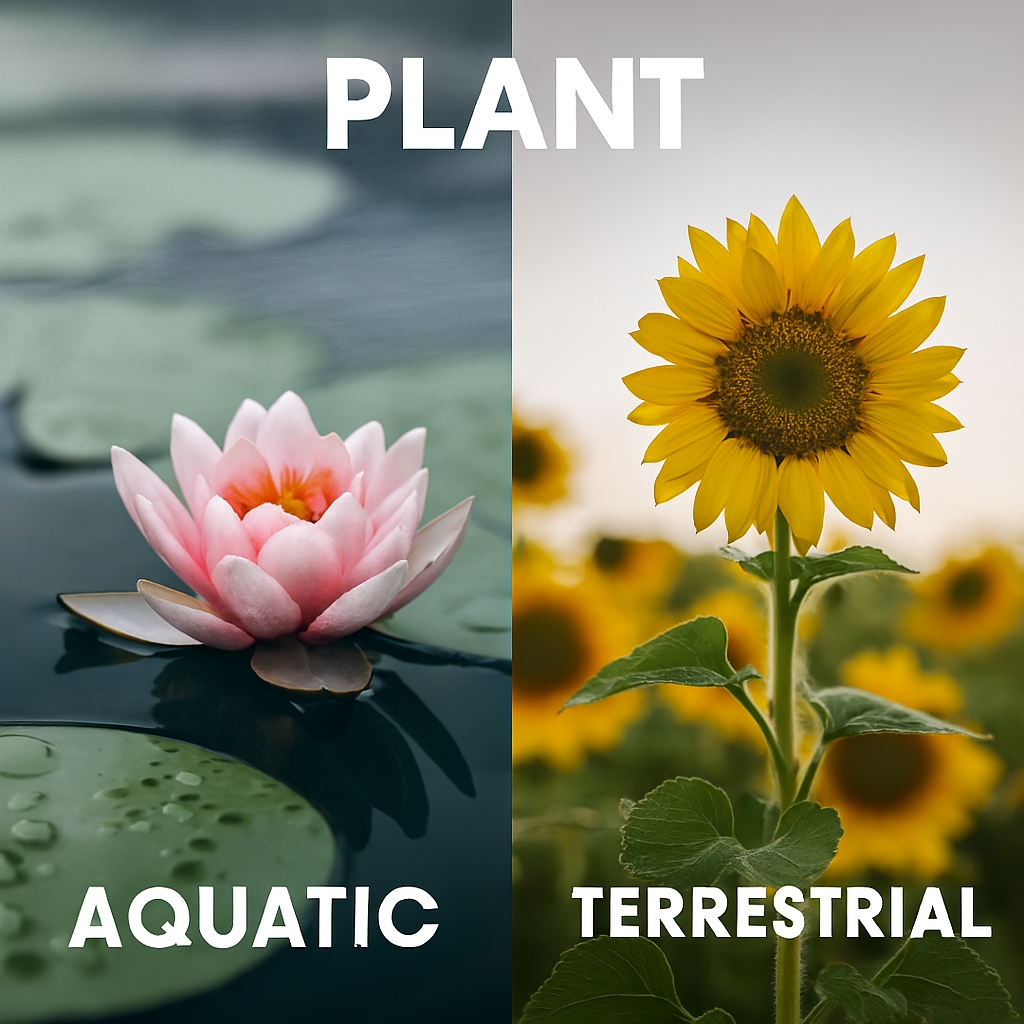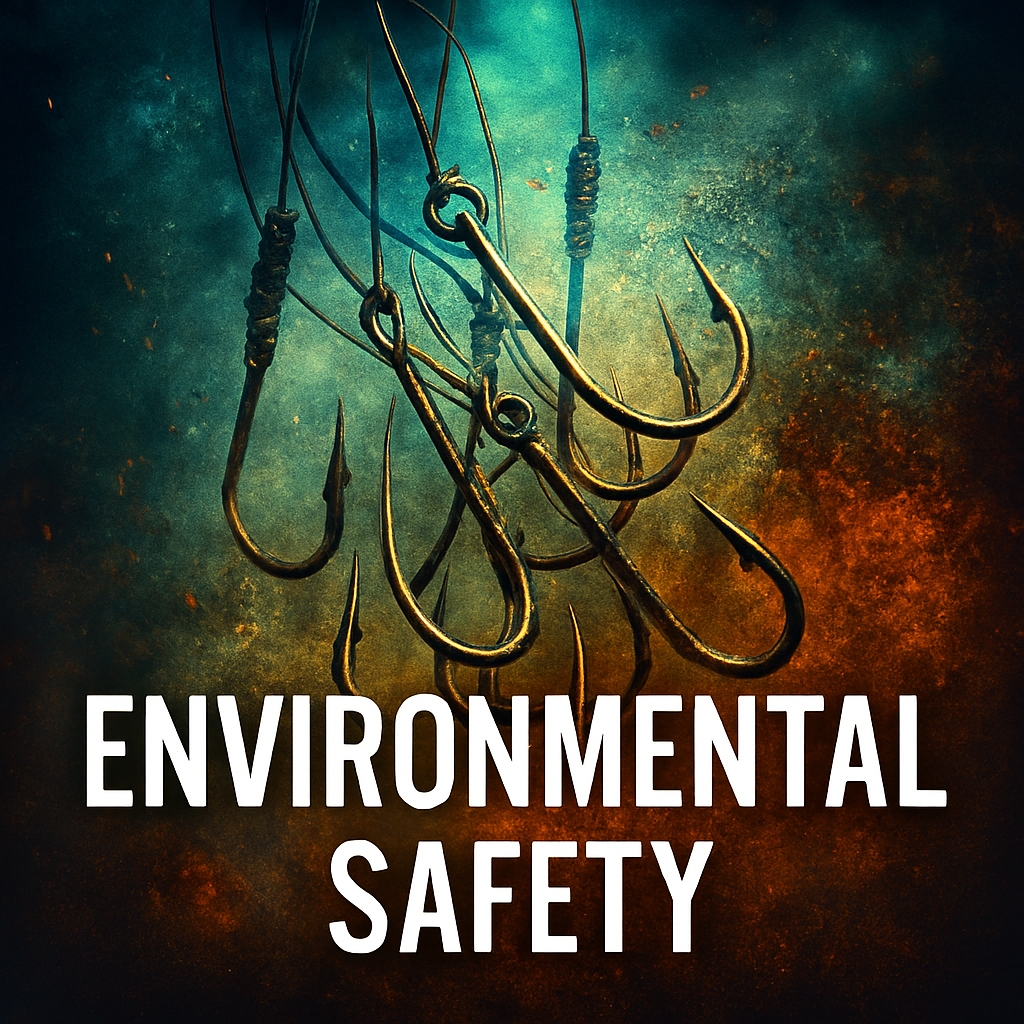Freshwater Adaptable Future – A Modular Vision For Living Water With Clever Living Ecoreefs
Freshwater ecosystems are under siege. Rivers are choked with sediment, lakes are losing oxygen, and wetlands are vanishing beneath concrete and agriculture. Yet within this crisis lies a quiet revolution. Ecoreefs—modular, symbolic structures designed to restore aquatic life—are now being adapted for freshwater environments. Originally developed for marine regeneration, these sculptural units are proving equally transformative in rivers, lakes, and inland waterways. Their strength lies in their simplicity. Each Ecoreef module is designed to mimic natural habitat forms while offering structural resilience and ecological function. In freshwater, they stabilize banks, slow erosion, and create refuge for fish, amphibians, and aquatic plants. They are scalable, portable, and community-installable. They do not require heavy machinery or invasive anchoring. Instead, they invite life back through form, flow, and function. This editorial explores how Ecoreefs are being reimagined for freshwater systems. It examines their ecological logic, symbolic design, and real-world impact. From urban canals to rural wetlands, Ecoreefs are becoming tools of both restoration and storytelling. They are not just infrastructure—they are invitations to reconnect with water.
Designing For Freshwater Flow – How Ecoreefs Adapt To Rivers And Lakes
Freshwater systems are dynamic, shaped by seasonal pulses, sediment loads, and shifting banks. Ecoreefs are engineered to work with these forces, not against them. Their modularity allows them to be placed in braided streams, meandering rivers, or still lakes. Each unit is designed to redirect flow, reduce scouring, and create microhabitats. In rivers, they can be placed along banks to reduce erosion and provide refuge for juvenile fish. In lakes, they serve as anchor points for aquatic vegetation and spawning grounds. Their open lattice structure allows water to pass through while trapping organic matter. This builds up substrate for invertebrates and plants. Over time, Ecoreefs become living structures, colonized by algae, mosses, and microbial films. Their form mimics root tangles, log jams, and gravel bars—features often lost in channelized waterways. Because they are modular, they can be scaled to fit narrow creeks or wide floodplains. They can be rearranged seasonally or after floods. This flexibility is critical in freshwater, where hydrology is less predictable than in marine environments. Ecoreefs do not require concrete foundations or invasive anchoring. They can be weighted with local stone or tethered with biodegradable rope. This makes them ideal for sensitive or protected areas. Their visual form also signals care and intention. Unlike riprap or gabions, Ecoreefs are designed to be seen, not hidden. They invite curiosity and stewardship. They are not just functional—they are symbolic. They say this water matters. They say someone is watching. They say life belongs here.
| Feature | Marine Ecoreefs | Freshwater Ecoreefs |
|---|---|---|
| Primary Function | Coral regeneration | Bank stabilization, habitat |
| Typical Deployment Depth | 2–20 meters | 0.5–5 meters |
| Anchor Method | Sand ballast | Stone ballast or tether |
| Target Species | Coral, fish, inverts | Fish, frogs, plants |
| Flow Interaction | Wave deflection | Current redirection |
Building Biodiversity – How Ecoreefs Support Freshwater Species
Freshwater biodiversity is declining faster than in any other biome. Amphibians, fish, aquatic insects, and submerged plants are disappearing due to habitat loss, pollution, and invasive species. Ecoreefs offer a modular solution to this crisis. Their porous structure creates microhabitats for spawning, shelter, and feeding. In rivers, they provide refuge from strong currents and predators. In lakes, they anchor aquatic vegetation and offer shade for temperature-sensitive species. Frogs lay eggs in the crevices, fish use them as nurseries, and dragonflies perch on their edges. Because Ecoreefs are made from inert, non-toxic materials, they do not leach chemicals or disrupt water chemistry. Their form encourages colonization by biofilms, which serve as food for invertebrates. Over time, these structures become living ecosystems. They support trophic webs from algae to apex predators. In degraded systems, Ecoreefs can jumpstart ecological succession. They do not replace natural features but supplement them where they have been lost. Their modularity allows for targeted deployment. For example, placing units near known amphibian breeding sites can increase reproductive success. In urban canals, Ecoreefs can be used to create green corridors for migratory species. Their visual presence also signals ecological care, encouraging public support and stewardship. Unlike traditional restoration methods, which often require heavy equipment and long timelines, Ecoreefs can be installed quickly and adjusted seasonally. This makes them ideal for adaptive management. They are not static—they evolve with the ecosystem. Their success is measured not just in species counts but in ecological relationships. They restore not just life, but the conditions for life to flourish.
| Species Group | Benefit From Ecoreefs | Habitat Function Provided |
|---|---|---|
| Amphibians | Egg laying, shelter | Crevices, shaded zones |
| Native Fish | Spawning, juvenile refuge | Flow protection, substrate |
| Aquatic Insects | Feeding, emergence platforms | Biofilm surfaces, vertical edges |
| Submerged Plants | Anchoring, nutrient cycling | Stabilized sediment, root zones |
| Birds and Mammals | Foraging, nesting proximity | Edge habitat, visual cover |
Symbolic Architecture – Designing Meaning Into Freshwater Restoration
Ecoreefs are not just functional—they are symbolic. Their form is designed to evoke care, intention, and ecological storytelling. In freshwater environments, this symbolism is especially powerful. Rivers and lakes are cultural touchstones, often associated with memory, identity, and belonging. By placing sculptural Ecoreefs in these spaces, communities signal that restoration is not just technical—it is emotional. The shapes of Ecoreefs can be customized to reflect local heritage, species, or ecological themes. For example, a frog-shaped module might honor a local amphibian species, while a spiral form could represent flow and renewal. These symbolic cues invite engagement. Children ask questions, artists respond, and elders share stories. Restoration becomes a shared narrative. This is especially important in urban areas, where waterways are often hidden or neglected. A visible Ecoreef becomes a landmark, a conversation starter, a point of pride. It says this water matters. It says someone is watching. It says life belongs here. Symbolic architecture also helps bridge disciplines. Engineers, ecologists, and designers can collaborate on form and function. This leads to more holistic solutions. It also opens funding pathways, as art and science converge. In freshwater systems, where visibility is high and access is frequent, symbolic design can transform passive observation into active stewardship. People begin to care not just about the structure, but about what it represents. This is the power of modular symbolism. It turns infrastructure into invitation. It turns restoration into ritual. It turns water into story.
Community Deployment – How Ecoreefs Empower Local Action
One of the most powerful aspects of Ecoreefs is their accessibility. Unlike large-scale restoration projects that require heavy machinery and expert teams, Ecoreefs can be deployed by communities themselves. Their modular design allows for transport by hand, installation with basic tools, and adjustment over time. This democratizes restoration. Schools, local councils, and citizen science groups can participate directly. In freshwater environments, this is especially valuable. Rivers and lakes often run through populated areas, making them ideal for community engagement. Installing Ecoreefs becomes an event—a workshop, a celebration, a shared act of care. This builds ecological literacy and emotional connection. People begin to see themselves as stewards, not spectators. Community deployment also increases monitoring capacity. Locals can observe changes, report issues, and adapt placement. This leads to more responsive management. It also builds resilience. When floods or droughts occur, communities can adjust Ecoreefs without waiting for external intervention. This flexibility is critical in a changing climate. Community-led restoration also fosters equity. Marginalized groups, often excluded from environmental decision-making, can reclaim agency. Ecoreefs become tools of inclusion. They invite participation across age, ability, and background. They are not just ecological—they are social. Their success is measured not just in species counts but in relationships built. This is restoration as empowerment. This is infrastructure as invitation. This is design for democracy.
Flood Resilience And Flow Control – Ecoreefs As Adaptive Infrastructure
Flooding is one of the most destructive forces in freshwater systems. It erodes banks, displaces species, and damages infrastructure. Traditional flood control methods rely on hard engineering—levees, concrete channels, and retention basins. These often disrupt ecological function and disconnect communities from their waterways. Ecoreefs offer a softer, adaptive alternative. Their modular design allows them to redirect flow, slow velocity, and dissipate energy. Placed strategically in rivers and floodplains, they reduce scouring and sediment transport. This protects banks and downstream habitats. Unlike rigid structures, Ecoreefs flex with the system. They can be repositioned after floods or adjusted seasonally. Their porous form allows water to pass through while trapping organic matter. This builds up substrate and slows runoff. In urban areas, Ecoreefs can be used to create green infrastructure corridors. These absorb stormwater, reduce peak flows, and improve water quality. In rural landscapes, they stabilize headwaters and reconnect floodplains. Their ecological function complements their hydrological role. By creating habitat, they increase resilience. Species can recolonize quickly after disturbance. Communities benefit from reduced damage and increased ecological value. Ecoreefs also offer visual cues. Their presence signals that flooding is being managed with care, not just control. This builds public trust and engagement. Adaptive infrastructure is not just about engineering—it is about empathy. Ecoreefs embody this shift. They are tools of both protection and restoration. They do not fight water—they work with it. They do not erase ecosystems—they rebuild them. This is flood resilience reimagined. This is flow control with life in mind.
| Flood Control Method | Ecological Impact | Flexibility | Community Engagement |
|---|---|---|---|
| Concrete Levees | Low | Rigid | Minimal |
| Retention Basins | Moderate | Limited | Occasional |
| Ecoreefs | High | Adaptive | High |
Urban Integration – Bringing Ecoreefs Into City Waterways
Cities are often built around rivers and lakes, yet these waterways are frequently neglected or buried. Urbanization has led to channelization, pollution, and habitat loss. Ecoreefs offer a way to reintroduce ecological function into city waterways. Their modular form allows them to be installed in canals, stormwater drains, and retention ponds. They do not require excavation or heavy machinery. This makes them ideal for retrofitting existing infrastructure. In urban rivers, Ecoreefs can be placed along banks to reduce erosion and create habitat. In stormwater channels, they slow flow and filter runoff. In lakes and ponds, they anchor vegetation and support aquatic life. Their visual presence also enhances public space. Unlike industrial materials, Ecoreefs are sculptural and symbolic. They invite curiosity and engagement. Children play near them, artists respond to them, and communities take pride in them. This builds ecological literacy and emotional connection. Urban integration also supports biodiversity. Even small Ecoreef installations can support frogs, fish, insects, and plants. Over time, these microhabitats become stepping stones for larger ecological networks. Cities benefit from improved water quality, reduced flooding, and increased green space. Ecoreefs also support climate adaptation. As rainfall patterns shift, cities need flexible infrastructure. Ecoreefs can be adjusted seasonally or after storms. Their modularity allows for experimentation and learning. Urban planners, engineers, and ecologists can collaborate on placement and design. This leads to more holistic solutions. Ecoreefs are not just ecological—they are civic. They restore not just habitat, but relationship. They bring life back to the heart of the city.

Cultural Repair – Restoring Meaning Through Freshwater Design
Waterways are cultural landscapes. They carry stories, memories, and meanings. Yet many have been severed from their communities through pollution, privatization, and neglect. Ecoreefs offer a way to restore not just ecology, but cultural connection. Their symbolic design invites storytelling and ritual. In Indigenous contexts, they can reflect traditional knowledge and cosmology. In urban settings, they can honor local species or historical events. Their presence signals care and intention. They say this water matters. They say someone is watching. They say life belongs here. Cultural repair is not just about aesthetics—it is about agency. Communities can participate in design, placement, and monitoring. This builds ownership and pride. It also fosters intergenerational learning. Elders share stories, youth ask questions, and restoration becomes a shared narrative. Ecoreefs become landmarks, not just infrastructure. They mark places of memory, celebration, and renewal. This is especially powerful in post-industrial landscapes, where waterways have been degraded or buried. A visible Ecoreef becomes a symbol of return. It says the story is not over. It says healing is possible. Cultural repair also supports ecological resilience. When people care about a place, they protect it. Ecoreefs foster this care. They are not just tools—they are totems. They embody values, relationships, and hope. This is design as storytelling. This is restoration as ritual. This is water as witness.
Amphibian Architecture – Supporting Frogs And Freshwater Reptiles With Ecoreefs
Amphibians are among the most sensitive indicators of freshwater health. Their permeable skin, complex life cycles, and dependence on clean water make them vulnerable to pollution, habitat fragmentation, and climate change. Ecoreefs offer a modular solution tailored to their needs. In shallow river margins and lake edges, Ecoreefs provide shaded crevices for egg laying, shelter from predators, and microclimates for metamorphosis. Their porous surfaces retain moisture, allowing amphibians to regulate temperature and hydration. Frogs, newts, and freshwater turtles use these structures as basking platforms, breeding zones, and seasonal refuges. Unlike concrete or metal installations, Ecoreefs do not overheat or leach toxins. Their form mimics natural root tangles and log piles, which are often removed during bank stabilization projects. By reintroducing these forms through modular design, Ecoreefs restore critical amphibian habitat. They also support insect populations, which serve as food for amphibians. Dragonflies, midges, and beetles colonize the biofilm-covered surfaces, creating a dynamic food web. In degraded wetlands, Ecoreefs can be used to reestablish amphibian corridors. Their modularity allows for placement in seasonal pools, drainage channels, and restored floodplains. This flexibility is essential for species with complex breeding behaviors. Ecoreefs also support monitoring. Their visibility allows researchers and citizen scientists to track amphibian use, egg deposition, and juvenile emergence. This data informs adaptive management and conservation planning. Amphibian architecture is not just about shelter—it is about survival. Ecoreefs offer a lifeline to species on the brink. They restore not just habitat, but hope.
| Amphibian Species | Ecoreef Benefit Provided | Habitat Function |
|---|---|---|
| Green Tree Frog | Moist crevices for egg laying | Shaded microhabitats |
| Eastern Banjo Frog | Seasonal refuge during drought | Moisture retention zones |
| Freshwater Turtle | Basking and nesting platforms | Elevated surfaces |
| Smooth Newt | Predator shelter and spawning | Submerged crevices |
| Marsh Frog | Insect-rich feeding zones | Biofilm-covered surfaces |
Wetland Recovery – Modular Interventions In Shallow Systems
Wetlands are among the most productive ecosystems on Earth, yet they are disappearing at alarming rates. Drained for agriculture, filled for development, and polluted by runoff, these shallow systems are in urgent need of restoration. Ecoreefs offer a modular intervention that supports wetland recovery without heavy machinery or invasive techniques. Their lightweight design allows for placement in marshes, bogs, and floodplain pools. Once installed, they stabilize sediment, reduce turbidity, and provide anchoring points for aquatic vegetation. This vegetation, in turn, supports invertebrates, birds, and amphibians. Ecoreefs also slow water movement, allowing for nutrient cycling and organic matter accumulation. In constructed wetlands, they enhance treatment capacity by increasing surface area for microbial activity. In natural wetlands, they restore lost structure and complexity. Their form mimics tussocks, root mats, and submerged logs—features often removed or degraded. By reintroducing these forms, Ecoreefs rebuild the physical foundation of wetland ecosystems. They also support seasonal dynamics. During dry periods, they retain moisture and provide refuge. During floods, they dissipate energy and protect banks. Their modularity allows for adaptive placement based on hydrological cycles. Wetland recovery is not just about water—it is about life. Ecoreefs restore the conditions for that life to return. They do not replace natural processes—they amplify them. They are tools of both restoration and resilience.
| Wetland Type | Ecoreef Function | Ecological Benefit |
|---|---|---|
| Marsh | Sediment stabilization | Plant anchoring |
| Bog | Moisture retention | Amphibian refuge |
| Floodplain Pool | Flow dissipation | Invertebrate habitat |
| Constructed Wetland | Microbial surface area | Water purification |
| Vernal Pool | Seasonal structure | Breeding support |
Monitoring And Metrics – Measuring Success With Ecoreefs
Restoration must be measurable to be meaningful. Ecoreefs support a range of monitoring strategies that allow researchers, communities, and managers to track ecological outcomes. Their visibility and modularity make them ideal for citizen science. Volunteers can record species presence, behavior, and seasonal changes. Researchers can install sensors within or near Ecoreefs to measure temperature, flow, and water quality. Their consistent form allows for comparative studies across sites and seasons. Metrics include species richness, juvenile recruitment, biofilm development, and sediment accumulation. These indicators reflect ecosystem health and resilience. Ecoreefs also support photographic monitoring. Their sculptural form makes them easy to locate and document. Time-lapse photography can reveal colonization patterns and seasonal dynamics. In urban areas, Ecoreefs can be integrated into educational programs. Students can collect data, analyze trends, and propose design modifications. This builds ecological literacy and engagement. Monitoring is not just about data—it is about connection. When people observe change, they become invested. Ecoreefs foster this investment. They are not just structures—they are stories. Each unit becomes a chapter in the restoration narrative. Metrics become milestones. Success is not just measured in numbers—it is felt in relationships. Monitoring with Ecoreefs is both scientific and symbolic. It tracks life, but also meaning.
| Metric Type | Monitoring Method | Insight Provided |
|---|---|---|
| Species Richness | Visual surveys, audio recording | Biodiversity trends |
| Juvenile Recruitment | Egg counts, emergence tracking | Reproductive success |
| Biofilm Development | Surface sampling | Microbial activity |
| Sediment Accumulation | Depth measurements | Erosion control |
| Water Quality | Sensor data | Ecology Change |
Seasonal Flexibility – Adapting Ecoreefs To Shifting Freshwater Conditions
Freshwater systems are highly seasonal, shaped by rainfall, temperature, and hydrological cycles. Ecoreefs are designed to adapt to these fluctuations without losing ecological function. During wet seasons, they dissipate flow energy and reduce erosion. In dry periods, they retain moisture and provide shaded refuge for aquatic life. Their modularity allows for repositioning based on seasonal needs. Units can be clustered in flood-prone zones or dispersed in drought-sensitive areas. This flexibility supports species with seasonal breeding or migration patterns. Amphibians, for example, benefit from shaded crevices during dry spells and open spawning zones during rains. Fish use deeper placements in summer and shallower zones in spring. Ecoreefs also support seasonal vegetation cycles. Plants anchor to their surfaces and respond to light and temperature changes. This creates dynamic microhabitats that evolve throughout the year. Seasonal flexibility also supports monitoring. Researchers can track ecological responses to climate variability. Communities can adjust placements based on observed changes. Restoration becomes responsive, not rigid.
| Season | Ecoreef Functionality | Ecological Benefit |
|---|---|---|
| Wet Season | Flow dissipation | Erosion control |
| Dry Season | Moisture retention | Amphibian refuge |
| Spring | Shallow placement | Spawning support |
| Summer | Deep placement | Temperature regulation |
| Autumn | Organic matter accumulation | Nutrient cycling |
Educational Impact – Teaching Ecology Through Ecoreef Engagement
Ecoreefs are powerful tools for ecological education. Their visual form and modular design make them ideal for hands-on learning. Schools can integrate Ecoreef installations into science curricula. Students observe species interactions, measure water quality, and track seasonal changes. This builds ecological literacy and emotional connection. Ecoreefs also support interdisciplinary learning. Art classes explore symbolic design, while geography students study hydrology. Community workshops use Ecoreefs to teach restoration principles. Youth groups participate in deployment and monitoring. This fosters stewardship across generations. Educational impact is not limited to formal settings. Public parks and urban waterways become outdoor classrooms. Interpretive signage can explain Ecoreef function and ecological goals. QR codes link to citizen science platforms. Education becomes immersive and participatory. Ecoreefs turn passive observation into active engagement.
| Educational Setting | Ecoreef Use Case | Learning Outcome |
|---|---|---|
| Primary School | Habitat observation | Ecological literacy |
| Secondary School | Water quality testing | Scientific method |
| Art Class | Symbolic design exploration | Creative expression |
| Community Workshop | Deployment training | Stewardship skills |
| Public Park | Interpretive signage | Public awareness |
Material Innovation – Designing Ecoreefs For Freshwater Durability
Freshwater environments present unique material challenges. Variable pH, sediment loads, and biological colonization require durable, inert materials. Ecoreefs are constructed from non-toxic composites that resist degradation and support biofilm growth. Their surfaces are textured to mimic natural substrates. This encourages colonization by algae, mosses, and invertebrates. Materials are selected for strength, weight, and ecological compatibility. In shallow systems, lightweight units allow for manual deployment. In deeper zones, heavier modules provide stability. Freshwater Ecoreefs avoid metals and plastics that leach or degrade. Their form is sculptural but functional. Open lattice designs allow flow while trapping organic matter. Material innovation also supports customization. Units can be colored to blend with local geology or stand out for visibility. Surface treatments can enhance microbial activity or reduce fouling. Durability ensures long-term ecological function. Innovation ensures adaptability across sites.
| Material Type | Freshwater Suitability | Ecological Function |
|---|---|---|
| Inert Composite | High | Biofilm support |
| Textured Ceramic | Moderate | Algae colonization |
| Recycled Aggregate | Variable | Sediment integration |
| Natural Stone Blend | High | Habitat mimicry |
| Biodegradable Resin | Low | Temporary installations |
Ecological Connectivity – Linking Habitats With Modular Ecoreef Networks
Fragmentation is one of the greatest threats to freshwater biodiversity. Roads, dams, and urban development break up rivers and lakes into isolated patches. Ecoreefs offer a modular solution to reconnect these habitats. By placing units at strategic intervals, they create stepping stones for species movement. Fish, amphibians, and invertebrates use them to migrate, breed, and forage. This connectivity supports genetic diversity and population resilience. In urban canals, Ecoreefs can link green spaces and stormwater ponds. In rural landscapes, they reconnect headwaters with floodplains. Their modularity allows for flexible placement across varied terrain. Units can be clustered in high-traffic zones or dispersed in quiet backwaters. Connectivity also supports ecological processes. Nutrient cycling, sediment transport, and microbial exchange improve when habitats are linked. Ecoreefs become conduits for life, not just isolated structures. Their presence signals continuity and care. Restoration becomes a network, not a node. This is design for connection, not containment.
| Connectivity Strategy | Ecoreef Role | Ecological Outcome |
|---|---|---|
| Stepping Stone Placement | Migration support | Species movement |
| Corridor Integration | Flow alignment | Nutrient exchange |
| Urban Canal Linking | Habitat extension | Biodiversity increase |
| Floodplain Reconnection | Seasonal access | Breeding success |
| Riparian Buffering | Edge habitat creation | Population resilience |
Policy And Planning – Integrating Ecoreefs Into Restoration Frameworks
For Ecoreefs to scale, they must be integrated into policy and planning frameworks. Their modularity makes them compatible with existing restoration goals. Governments can include Ecoreefs in riparian buffer programs, wetland recovery plans, and urban water strategies. Their low cost and minimal footprint make them attractive for pilot projects. Planners can use them to meet biodiversity targets, flood mitigation goals, and community engagement metrics. Ecoreefs also align with nature-based solutions frameworks. They offer ecological function without heavy engineering. This supports climate adaptation and resilience planning. Their symbolic design enhances public support. Policymakers can leverage this visibility to build momentum. Ecoreefs also support cross-sector collaboration. Engineers, ecologists, artists, and educators can co-design deployments. This leads to more inclusive and effective outcomes. Planning becomes participatory, not prescriptive. Ecoreefs are not just tools—they are platforms. They invite innovation, dialogue, and shared ownership. Policy becomes a pathway, not a barrier.
| Planning Domain | Ecoreef Integration Strategy | Benefit Delivered |
|---|---|---|
| Riparian Restoration | Modular bank stabilization | Erosion control |
| Urban Water Management | Canal and pond retrofitting | Biodiversity enhancement |
| Climate Adaptation | Nature-based infrastructure | Flood resilience |
| Community Engagement | Symbolic design inclusion | Public support |
| Education And Outreach | Curriculum-aligned deployment | Ecological literacy |

Cost Efficiency – Comparing Ecoreefs To Traditional Restoration Methods
Restoration is often constrained by budget. Heavy machinery, long timelines, and complex permitting can stall progress. Ecoreefs offer a cost-efficient alternative. Their modular design reduces transport and installation costs. Units can be deployed by hand, avoiding expensive equipment. Materials are durable and low-maintenance. Over time, Ecoreefs become self-sustaining ecosystems. This reduces long-term management expenses. Compared to concrete structures, they offer ecological function at a fraction of the cost. Their symbolic value also enhances funding opportunities. Grants, sponsorships, and community fundraising are more accessible when projects are visible and engaging. Ecoreefs support phased deployment. Sites can start small and expand over time. This allows for adaptive budgeting. Cost efficiency does not mean compromise. Ecoreefs deliver ecological, social, and aesthetic value. Restoration becomes feasible, not fragile. Investment becomes impact.
| Restoration Method | Initial Cost | Maintenance Cost | Ecological Value |
|---|---|---|---|
| Concrete Bank Armoring | High | Moderate | Low |
| Riprap Installation | Moderate | High | Low |
| Ecoreef Deployment | Low | Low | High |
| Vegetative Planting | Moderate | Moderate | Moderate |
| Gabion Structures | High | High | Low |
Artistic Collaboration – Designing Ecoreefs With Creative Communities
Art and ecology are natural allies. Ecoreefs invite artistic collaboration through their symbolic form. Sculptors, designers, and cultural practitioners can co-create modules that reflect local identity. This enhances visibility and emotional resonance. Artistic Ecoreefs become landmarks, not just infrastructure. They invite curiosity, storytelling, and pride. Communities engage more deeply when restoration is beautiful. Artists also bring new perspectives to ecological design. They challenge assumptions and expand possibilities. Ecoreefs become canvases for meaning. In public spaces, artistic modules spark dialogue. In schools, they inspire creativity and care. Collaboration also supports funding and outreach. Art grants, exhibitions, and media coverage amplify impact. Restoration becomes cultural, not just technical. Ecoreefs are not just functional—they are expressive. They speak to values, histories, and futures. Artistic collaboration turns restoration into ritual.
| Artistic Medium | Ecoreef Application | Community Impact |
|---|---|---|
| Sculpture | Module form and texture | Visual engagement |
| Painting | Surface design and symbolism | Cultural storytelling |
| Installation Art | Public space integration | Civic pride |
| Performance | Deployment ceremonies | Emotional connection |
| Digital Media | Educational content | Outreach and awareness |
Regenerative Economics – Ecoreefs As Catalysts For Local Livelihoods
Freshwater restoration is not just ecological—it can be economic. Ecoreefs create opportunities for local employment, training, and enterprise. Communities can manufacture, deploy, and monitor modules using locally sourced materials. This reduces transport costs and builds regional capacity. Restoration becomes a livelihood, not just a volunteer effort. Artisans can design symbolic modules, educators can lead workshops, and technicians can manage data collection. Ecoreefs also attract ecotourism. Restored rivers and lakes become destinations for birdwatching, kayaking, and nature walks. This supports small businesses and hospitality services. Regenerative economics is circular. Investment in ecology returns as community resilience. Ecoreefs also reduce infrastructure costs. By preventing erosion and improving water quality, they lower maintenance expenses for cities and farms. Their visibility supports grant funding and sponsorship. Local governments can integrate Ecoreefs into green job programs. Restoration becomes a sector, not a side project. Regenerative economics is about aligning ecology with equity. Ecoreefs make that alignment visible and viable.
| Economic Activity | Ecoreef Role | Community Benefit |
|---|---|---|
| Local Manufacturing | Module production | Job creation |
| Ecotourism | Habitat restoration | Business development |
| Education And Training | Workshop facilitation | Skill building |
| Monitoring And Data | Citizen science engagement | Technical literacy |
| Public Infrastructure | Erosion control | Cost savings |
Long-Term Stewardship – Sustaining Ecoreef Impact Over Time
Restoration is not a one-time event—it is a long-term commitment. Ecoreefs support sustained stewardship through their modularity and visibility. Communities can monitor, maintain, and adapt installations over years. Their sculptural form invites ongoing engagement. Seasonal adjustments, ecological observations, and design refinements become part of the rhythm. Stewardship builds relationships—with place, with species, and with each other. Schools return annually to track frog populations. Councils host seasonal cleanups and habitat checks. Artists repaint modules to reflect changing themes. This continuity deepens care. Ecoreefs also support intergenerational stewardship. Elders share stories, youth collect data, and families participate together. Long-term impact is measured not just in biodiversity, but in belonging. Ecoreefs become part of the landscape’s identity. They are remembered, revisited, and respected. Stewardship is sustained through visibility, adaptability, and meaning. Ecoreefs are designed to last—not just physically, but emotionally. They are anchors of ecological memory.
| Stewardship Strategy | Ecoreef Feature | Sustained Impact |
|---|---|---|
| Seasonal Monitoring | Modular adjustability | Responsive management |
| Community Rituals | Symbolic design | Emotional connection |
| Educational Return Visits | Visual presence | Intergenerational learning |
| Artistic Renewal | Surface customization | Cultural continuity |
| Citizen Science | Accessible structure | Data-driven care |
Conclusion – A Freshwater Future Built On Modular Meaning
Ecoreefs represent a new paradigm in freshwater restoration. They are not just structures—they are systems of care, connection, and creativity. Their modularity allows for ecological precision and community participation. Their symbolic design invites emotional resonance and cultural repair. In rivers, lakes, and wetlands, Ecoreefs restore not just habitat, but hope. They offer a blueprint for regeneration that is scalable, inclusive, and adaptive. From flood resilience to amphibian architecture, each module carries meaning. Restoration becomes a shared act, not a distant policy. Communities become co-creators of ecological futures. Ecoreefs are tools of both science and story. They embody values of equity, empathy, and resilience. Their impact is measured in species, in relationships, and in memory. As climate pressures intensify, freshwater systems need flexible, visible, and meaningful interventions. Ecoreefs deliver all three. They are not the end of restoration—they are its beginning. A freshwater future is possible. It starts with modular design. It grows through collective care.
Join The Discussion – Share Your Vision For Living Water
Freshwater restoration is a shared journey. Whether you’re a scientist, artist, educator, planner, or citizen, your voice matters. What stories do your rivers carry? What species do your lakes shelter? What rituals do your wetlands remember?
#FreshwaterRestoration #EcoreefDesign #ModularEcology #RiverRewilding #LakeRegeneration #WetlandRecovery #SymbolicInfrastructure #CommunityScience #ClimateResilience #AmphibianHabitat #UrbanWaterways #EcologicalArt #RegenerativeDesign #InclusiveRestoration #LivingWaterSystems













Leave a Reply